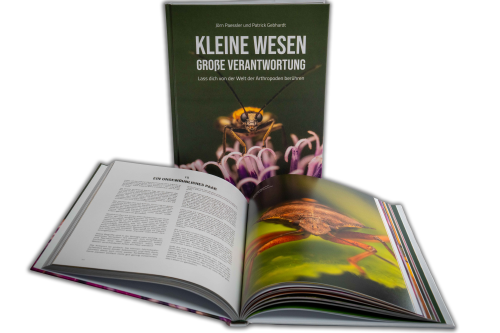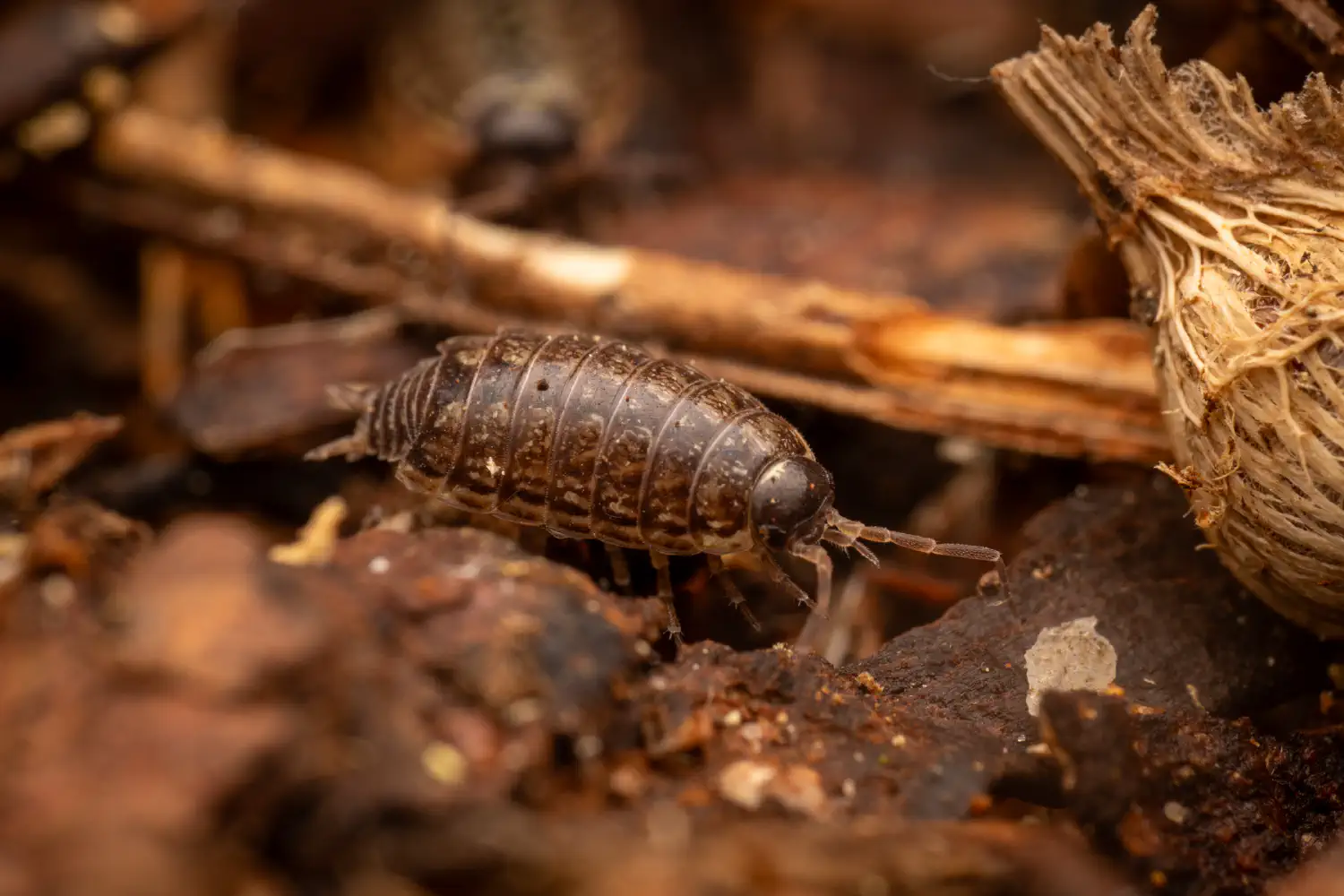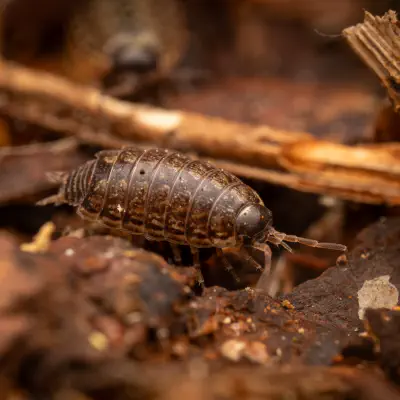Crustaceans Lat. “Crustacea“
Crustaceans (Crustacea /krʌˈsteɪʃə/) form a large, diverse arthropod taxon which includes such familiar animals as crabs, lobsters, crayfish, shrimp, krill, woodlice, and barnacles. The crustacean group is usually treated as a subphylum, and thanks to recent molecular studies it is now well accepted that the crustacean group is paraphyletic, and comprises all animals in the Pancrustacea clade other than hexapods. Some crustaceans are more closely related to insects and other hexapods than they are to certain…
Hierarchy
Anatomy
The body of a crustacean is composed of segments, which are grouped into three regions: the cephalon or head, the pereon or thorax, and the pleon or abdomen. The head and thorax may be fused together to form a cephalothorax, which may be covered by a single large carapace. The crustacean body is protected by the hard exoskeleton, which must be moulted for the animal to grow. The shell around each somite can be divided into a dorsal tergum, ventral sternum and a lateral pleuron. Various parts of the exoskeleton may be fused together. Each somite, or body segment can bear a pair of appendages: on the segments of the head, these include two pairs of antennae, the mandibles and maxillae; the thoracic segments bear legs, which may be specialised as pereiopods (walking legs) and maxillipeds (feeding legs). Malacostraca and Remipedia (and the hexapods) have abdominal appendages. All other classes of crustaceans have a limbless abdomen, except from a telson and caudal rami which is present in many groups. The abdomen in malacostracans bears pleopods, and ends in a telson, which bears the anus, and is often flanked by uropods to form a tail fan. The number and variety of appendages in different crustaceans may be partly responsible for the group’s success. Crustacean appendages are typically biramous, meaning they are divided into two parts; this includes the second pair of antennae, but not the first, which is usually uniramous, the exception being in the Class Malacostraca where the antennules may be generally biramous or even triramous. It is unclear whether the biramous condition is a derived state which evolved in crustaceans, or whether the second branch of the limb has been lost in all other groups. Trilobites, for instance, also possessed biramous appendages.
The main body cavity is an open circulatory system, where blood is pumped into the haemocoel by a heart located near the dorsum. Malacostraca have haemocyanin as the oxygen-carrying pigment, while copepods, ostracods, barnacles and branchiopods have haemoglobins. The alimentary canal consists of a straight tube that often has a gizzard-like “gastric mill” for grinding food and a pair of digestive glands that absorb food; this structure goes in a spiral format. Structures that function as kidneys are located near the antennae. A brain exists in the form of ganglia close to the antennae, and a collection of major ganglia is found below the gut. In many decapods, the first (and sometimes the second) pair of pleopods are specialised in the male for sperm transfer. Many terrestrial crustaceans (such as the Christmas Island red crab) mate seasonally and return to the sea to release the eggs. Others, such as woodlice, lay their eggs on land, albeit in damp conditions. In most decapods, the females retain the eggs until they hatch into free-swimming larvae.
Ecology
Most crustaceans are aquatic, living in either marine or freshwater environments, but a few groups have adapted to life on land, such as terrestrial crabs, terrestrial hermit crabs, and woodlice. Marine crustaceans are as ubiquitous in the oceans as insects are on land. Most crustaceans are also motile, moving about independently, although a few taxonomic units are parasitic and live attached to their hosts (including sea lice, fish lice, whale lice, tongue worms, and Cymothoa exigua, all of which may be referred to as “crustacean lice”), and adult barnacles live a sessile life – they are attached headfirst to the substrate and cannot move independently. Some branchiurans are able to withstand rapid changes of salinity and will also switch hosts from marine to non-marine species. Krill are the bottom layer and most important part of the food chain in Antarctic animal communities. Some crustaceans are significant invasive species, such as the Chinese mitten crab, Eriocheir sinensis, and the Asian shore crab, Hemigrapsus sanguineus. Since the opening of the Suez Canal, close to 100 species of crustaceans from the Red Sea and the Indo-Pacific realm have established themselves in the eastern Mediterranean sub-basin, with often significant impact on local ecosystems.
Classification and phylogeny
The name “crustacean” dates from the earliest works to describe the animals, including those of Pierre Belon and Guillaume Rondelet, but the name was not used by some later authors, including Carl Linnaeus, who included crustaceans among the “Aptera” in his Systema Naturae. The earliest nomenclatural valid work to use the name “Crustacea” was Morten Thrane Brünnich’s Zoologiæ Fundamenta in 1772, although he also included chelicerates in the group. The subphylum Crustacea comprises almost 67,000 described species, which is thought to be just 1⁄10 to 1⁄100 of the total number as most species remain as yet undiscovered. Although most crustaceans are small, their morphology varies greatly and includes both the largest arthropod in the world – the Japanese spider crab with a leg span of 3.7 metres (12 ft) – and the smallest, the 100-micrometre-long (0.004 in) Stygotantulus stocki. Despite their diversity of form, crustaceans are united by the special larval form known as the nauplius. The exact relationships of the Crustacea to other taxa are not completely settled as of April 2012. Studies based on morphology led to the Pancrustacea hypothesis, in which Crustacea and Hexapoda (insects and allies) are sister groups. More recent studies using DNA sequences suggest that Crustacea is paraphyletic, with the hexapods nested within a larger Pancrustacea clade. The traditional classification of Crustacea based on morphology recognised four to six classes. Bowman and Abele (1982) recognised 652 extant families and 38 orders, organised into six classes: Branchiopoda, Remipedia, Cephalocarida, Maxillopoda, Ostracoda, and Malacostraca. Martin and Davis (2001) updated this classification, retaining the six classes but including 849 extant families in 42 orders. Despite outlining the evidence that Maxillopoda was non-monophyletic, they retained it as one of the six classes, although did suggest that Maxillipoda could be replaced by elevating its subclasses to classes. Since then phylogenetic studies have confirmed the polyphyly of Maxillopoda and the paraphyletic nature of Crustacea with respect to Hexapoda. Recent classifications recognise ten to twelve classes in Crustacea or Pancrustacea, with several former maxillopod subclasses now recognised as classes (e.g. Thecostraca, Tantulocarida, Mystacocarida, Copepoda, Branchiura and Pentastomida).
The following cladogram shows the updated relationships between the different extant groups of the paraphyletic Crustacea in relation to the class Hexapoda.
According to this diagram, the Hexapoda are deep in the Crustacea tree, and any of the Hexapoda is distinctly closer to e.g. a Multicrustacean than an Oligostracan is.
Fossil record
Crustaceans have a rich and extensive fossil record, most of the major groups of crustaceans appear in the fossil record before the end of the Cambrian, namely the Branchiopoda, Maxillopoda (including barnacles and tongue worms) and Malacostraca; there is some debate as to whether or not Cambrian animals assigned to Ostracoda are truly ostracods, which would otherwise start in the Ordovician. The only classes to appear later are the Cephalocarida, which have no fossil record, and the Remipedia, which were first described from the fossil Tesnusocaris goldichi, but do not appear until the Carboniferous. Most of the early crustaceans are rare, but fossil crustaceans become abundant from the Carboniferous period onwards. Within the Malacostraca, no fossils are known for krill, while both Hoplocarida and Phyllopoda contain important groups that are now extinct as well as extant members (Hoplocarida: mantis shrimp are extant, while Aeschronectida are extinct; Phyllopoda: Canadaspidida are extinct, while Leptostraca are extant). Cumacea and Isopoda are both known from the Carboniferous, as are the first true mantis shrimp. In the Decapoda, prawns and polychelids appear in the Triassic, and shrimp and crabs appear in the Jurassic. The fossil burrow Ophiomorpha is attributed to ghost shrimps, whereas the fossil burrow Camborygma is attributed to crayfishes. The Permian–Triassic deposits of Nurra preserve the oldest (Permian: Roadian) fluvial burrows ascribed to ghost shrimps (Decapoda: Axiidea, Gebiidea) and crayfishes (Decapoda: Astacidea, Parastacidea), respectively. However, the great radiation of crustaceans occurred in the Cretaceous, particularly in crabs, and may have been driven by the adaptive radiation of their main predators, bony fish. The first true lobsters also appear in the Cretaceous.
Consumption by humans
Many crustaceans are consumed by humans, and nearly 10,700,000 tons were harvested in 2007; the vast majority of this output is of decapod crustaceans: crabs, lobsters, shrimp, crawfish, and prawns. Over 60% by weight of all crustaceans caught for consumption are shrimp and prawns, and nearly 80% is produced in Asia, with China alone producing nearly half the world’s total. Non-decapod crustaceans are not widely consumed, with only 118,000 tons of krill being caught, despite krill having one of the greatest biomasses on the planet.
See also
Pain in crustaceans
External links
Texts on Wikisource: “Encyclopedia Americana - Wikipedia”. Encyclopedia Americana. Vol. 8. 1920. Clark, Hubert Lyman; Ingersoll, Ernest (1905). “Crustacea”. New International Encyclopedia. Vol. 5. Crustacea.net, an online resource on the biology of crustaceans Crustacea Archived October 9, 2007, at the Wayback Machine: Natural History Museum of Los Angeles County Crustacea: Tree of Life Web Project The Crustacean Society Archived 2011-11-10 at the Wayback Machine Natural History Collections: Crustacea: University of Edinburgh Crustaceans (Crustacea) on the shore of Singapore Crustacea(crabs, lobsters, shrimps, prawns, barnacles) Archived 2012-01-11 at the Wayback Machine: Biodiversity Explorer
Ancestry Graph
Further Information
„Crustaceans“ on wikipedia.org
„Crustaceans“ on iNaturalist.org
Copyright

This article uses material from the Wikipedia article Crustacea the free encyclopedia Wikipedia which is released under Creative Commons Attribution-ShareAlike 4.0 International License). On Wikipedia a list of authors is available.

Little beings in print
Order our calendars and books today!
Compiled with love. Printed sustainably. Experience our little beings even more vividly in print. All our publications are available for a small donation.


